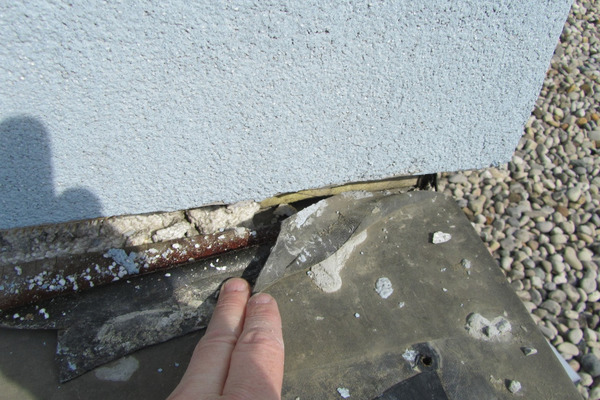Upcoming Sessions
- There are no upcoming sessions scheduled
See All Upcoming Sessions
_(1).jpg)
Recent changes in building energy codes include enclosure criteria that minimize building enclosure thermal loads and, in turn, reduce a building’s energy consumption. These changes require modifications in traditional building enclosure designs to meet evolving energy code requirements. Unfortunately, some energy-efficient designs, while code compliant, may adversely impact a building’s durability. The minimum requirements in green standards alone, such as LEED, Green Globes, and IgCC, may lack comprehensive measures to ensure long-term durability of the enclosure assemblies. Optional and required credits included in green standards are beginning to address moisture durability and, in this paper, are compared regarding the scope and impact of the building enclosure across the project phases: • Material selection • Design and procurement • Construction activities • Performance testing • Operation and maintenance • Enclosure commissioning This paper reviews various aspects among the green standards, including gaps and similarities in the rating systems, and strategies to utilize the best parts of each rating system to improve project performance related to moisture durability. Detailed roof system examples will also be provided demonstrating how these measures can enable energy-efficient and durable enclosure assemblies. Jennifer Keegan, AAIA GAF | Parsippany, NJ Jennifer Keegan is the director of building and roofing science for GAF, focusing on overall roof system design and performance. She has over 20 years of experience as a building enclosure consultant specializing in assessment, design, and remediation of building enclosure systems. Keegan provides technical leadership within the industry as the chair of the ASTM D08.22 Roofing and Waterproofing Subcommittee, and the education chair for IIBEC; and as an advocate for women within the industry as an executive board member of National Women in Roofing and a board member of Women in Construction. Benjamin Meyer, AIA, NCARB, LEED AP GAF | Moseley, VA Benjamin Meyer is a building and roofing science architect with GAF. Previous experience includes enclosure consultant principal, technical management for enclosure products, commercial design, real estate development, and construction management on a range of projects that included residential, educational, offices, and DuPont industrial projects. Industry positions include voting member of the ASHRAE 90.1 Envelope and Project Committees, LEED Technical Committee member, past technical advisor of the LEED Materials (MR) TAG, and director of the Air Barrier Association of America (ABAA). Read more

Description This seminar focuses on plaza deck systems, surface-applied waterproofing, and below-grade waterproofing. The course will review the differences between roofing, dampproofing and waterproofing. The seminar will include a discussion of waterproofing materials and accessories, design and specification, and application. The seminar is designed for the practicing waterproofing consultant and those who are aspiring to become a Waterproofing Consultant. The course will focus on plaza deck, surface-applied, and below-grade waterproofing. IIBEC Core Competency Tag(s): Below Grade/Waterproofing Subtopics: Below Grade/Waterproofing, 2021 convention, Codes & Standards, Site Management, Site Drainage, Inspection/ Quality Control, Document Review & Assessment Knowledge Level: Intermediate Recommended Course Prerequisites: None Author/Presenter Paul Buccellato, F-IIBEC, RWC, REWC, FASTM, AIA Henshell & Buccellato, Consulting Architects. Credit Start Date: June 10, 2025 Credit Expiration Date: June 10, 2028 Original Credit Start Date: June 15, 2021 Course Access: Courses are accessible in LearnUpon for one year from the date of purchase. Content Review Information Review Date: March 17, 2025 Reviewer: Samir Ibrahim, F-IIBEC, AIA Continuing Education Credit Statements This course is approved for 6.0 IIBEC CEH This course is approved for 6.0 AIA LU HSW AIA Program Number: WPPF_2025_OD AIA Provider Number: G024 AIA CES Provider statement IIBEC is a registered provider of AIA-approved continuing education under Provider G024. All registered AIA CES Providers must comply with the AIA Standards for Continuing Education Programs. Any questions or concerns about this provider or this learning program may be sent to AIA CES ([email protected] or (800) AIA 3837, Option 3). This learning program is registered with AIA CES for continuing professional education. As such, it does not include content that may be deemed or construed to be an approval or endorsement by the AIA of any material of construction or any method or manner of handling, using, distributing, or dealing in any material or product. AIA continuing education credit has been reviewed and approved by AIA CES. Learners must complete the entire learning program to receive continuing education credit. AIA continuing education Learning Units earned upon completion of this course will be reported to AIA CES for AIA members. Certificates of Completion for both AIA members and non-AIA members are available upon request. Read more

This presentation was initially provided at the 2021 Convention and Tradeshow in Phoenix, Arizona Do you get projects that may involve steep roofs? The Roofing Industry Committee on Weather Issues (RICOWI) has inspected hundreds of steep roofs as part of its Wind Investigation Program (WIP). These post-hurricane investigations have led to a better understanding of the strengths and weaknesses of the wind performance of metal panel, tile, and asphalt shingle roofs. This presentation will discuss the systems, strengths, and detail where consultants and inspectors can focus to ensure a wind-resistant steep roof. Since the inception of the RICOWI WIP in 1996, there has been wind tunnel, full-scale and laboratory-designed wind research and testing. This research has resulted in better products and systems, but the fury and duration of hurricanes test every aspect of design and installation. Using photos from six WIP investigations, participants will see how systems have improved and where more attention is needed. This information can be used to design roofs for all climates and wind zones. David Roodvoets DLR Consultants | Tampa, FL David Roodvoets has had a leadership role in all six RICOWI hurricane investigations. He has worked with ARMA on asphalt shingle wind resistance and test standards and has been involved with post-storm wind damage investigations for 40 years. Roodvoets has worked with wind research engineers in testing of asphalt shingles, vegetative systems, photovoltaic systems, single-ply, and ballasted roof systems. As a result, manufacturers have incorporated improved design and installation requirements, and changes have been developed, advocated for, and incorporated into the ICC family of codes. Read more

This presentation was initially provided at the 2021 Convention in Phoenix, Arizona. This presentation will highlight specifically how U.S. codes and standards create assurances that energy efficiency improvements do not compromise fire safety by controlling the use of combustible building products in commercial buildings. Examples of approved assemblies in a variety of exterior walls for different construction configurations will be provided. There will also be a focus on how fire safety can be maintained throughout the design process and construction phases using code compliance techniques like engineering judgments for wall assemblies. Adequate time will be allowed for an interactive discussion of current industry resources and topics of interest to the audience. Jeffrey H. Greenwald North American Modern Building Alliance | Tampa, FL Jeffrey H. Greenwald is an association executive with over 20 years of association management and advocacy experience. Prior positions include as an executive director, vice president for engineering, and vice president for research and development with four national associations. Greenwald is an innovative leader with demonstrated success in strategy development and execution, building code development, credential management, marketing, public affairs, and research and development. Lorraine Ross Intech Consulting, Inc. | Tampa, FL Lorraine Ross has been involved in all aspects of the building products industry for over 30 years, including manufacturing, technical service, and regulatory issues such as building code development, compliance, and testing laboratory experience. As president of Intech Consulting Inc., she is actively involved in building and fire code development through the International Code Council, NFPA, and a variety of state code development activities, particularly regarding foam plastic insulation. Currently, she is a member of the Florida Building Commission Roofing Technical Advisory Committee. Lorraine has delivered many presentations on building code topics at a variety of industry conferences. Read more

This course was initially presented at the 2021 International Convention and Tradeshow. There have been significant developments in methods to quantitatively evaluate building enclosure thermal bridging. While these tools are available to the industry, it is apparent that many project teams do not know how to efficiently incorporate thermal bridging analysis as part of project design. As project teams are incorporating target value design and lean principles through an integrated project delivery, a thermal bridging analysis can bring huge value to the project. An effective analysis quantitatively identifies thermal performance and condensation risk, while working with the project team to determine the most cost-effective approach to meet the project goals. The thermal analysis can be reconciled with the owner’s project requirements, energy modeling, and HVAC design to realize the full value. This presentation will summarize the technical aspects of thermal bridging while using case studies to show how the process is used effectively to achieve maximum value. Elisa Cheung, PE Morrison Hershfield | Dallas, TX Elisa Cheung is a building science consultant and professional engineer with an education from one of Canada’s top universities. She has over four years of technical experience working on a variety of projects in the building design and construction industry. Her building enclosure project experience includes condition assessments, nondestructive and exploratory investigation, remedial design and construction administration, diagnostic water testing, and consulting on new construction projects. Cheung is passionate about her projects and loves problem-solving to help her clients meet project performance goals. Rick Ziegler, RRC, RRO, PE Morrison Hershfield | Dallas, TX Rick Ziegler is a professional engineer with over a decade of experience in the design, construction, and rehabilitation of the building enclosure. His technical expertise is broad but specifically includes thermal bridging analysis, energy code compliance, and roofing/waterproofing. Rick has consulted on existing buildings and new construction projects across all market sectors throughout North America, Europe, Asia, and South America. Read more

This course was initially presented at the 2021 International Convention and Tradeshow. Water-related damage is common at parapet terminations with high-rising walls that lack proper integration of the four primary control layers. The speaker has found that except for EIFS manufacturers’ standard details, there are little to no industry-recognized saddle flashing details available at this time to provide guidance to design professionals and contractors for the integration of the four primary control layers. Construction documents often do not include saddle flashing details or specification requirements, and consideration needs to be given to construction sequencing when developing the details. Due to the lack of industry-recognized details, a set of multi-step isometric details was developed by Michael Nagle, showing the integration of the air/weather-resistive barriers, roofing membrane, through-wall flashing, and sheet metal flashing for inclusion in one or more industry-recognized detail manuals. He recently collaborated with the International Masonry Institute (IMI) to construct saddle flashing mock-ups with the assistance of a manufacturer and multiple contractors. The mock-ups will be used as educational tools for masons, roofers, and design professionals. This presentation will provide beneficial guidance to building enclosure consultants, design professionals, building owners, facility managers, and manufacturers. Michael Nagle, RA, NCARB Wiss, Janney, Elstner Associates | Cleveland, OH Michael Nagle is a building enclosure consultant with specializations in façade, windows, and roofing problems in existing, historic, and new buildings. Since joining WJE in 2004, he has provided professional services for numerous projects involving water and air infiltration, condensation, and distress conditions in a variety of building enclosure systems, including brick masonry, stone, terra cotta, windows, curtainwall, metal wall panels, EIFS, stucco, sealants, roofing, and waterproofing. He is an active member in the Cleveland chapter of the Building Enclosure Council and chair of the ASTM C24.10 Building Seals and Sealants Subcommittee. Read more
Shopping Cart
Your cart is empty
